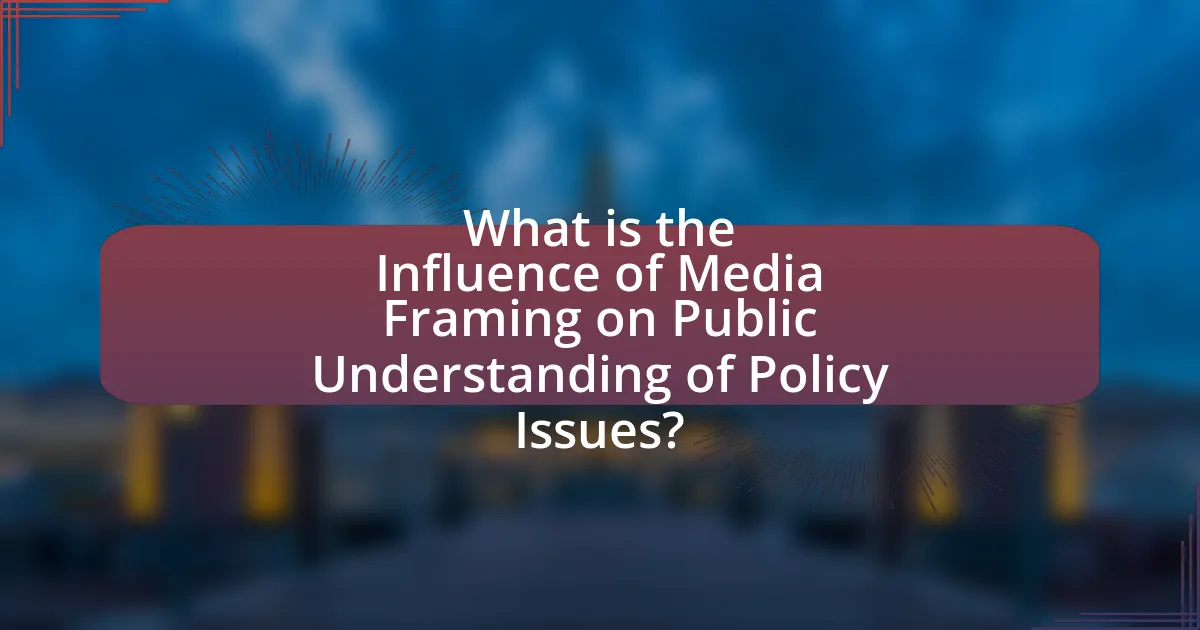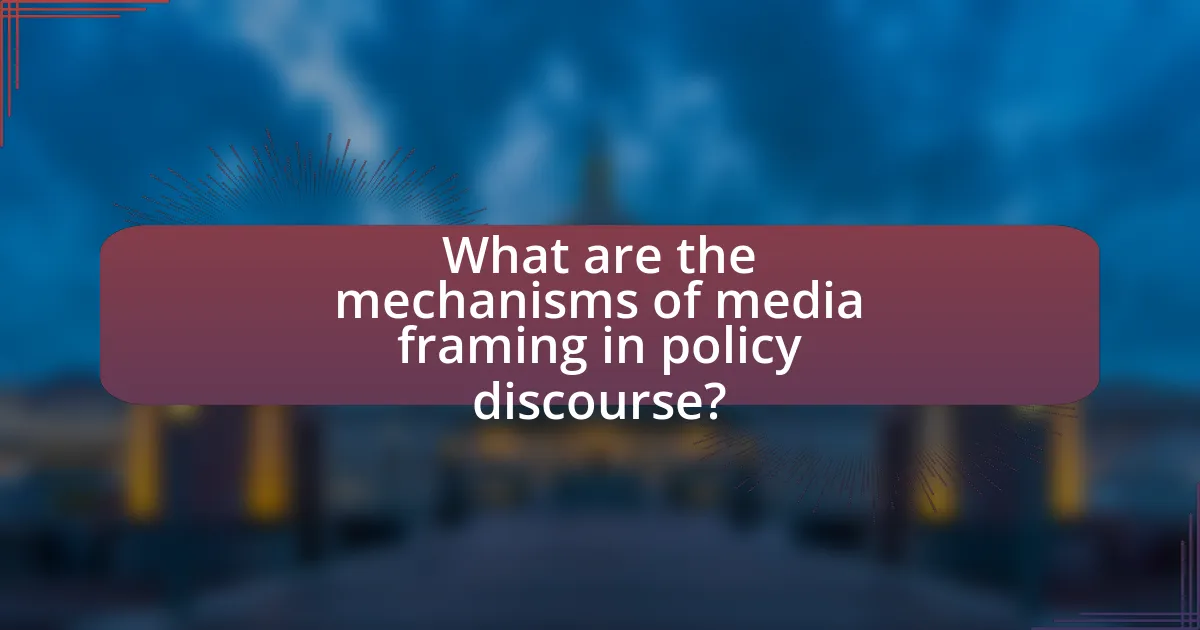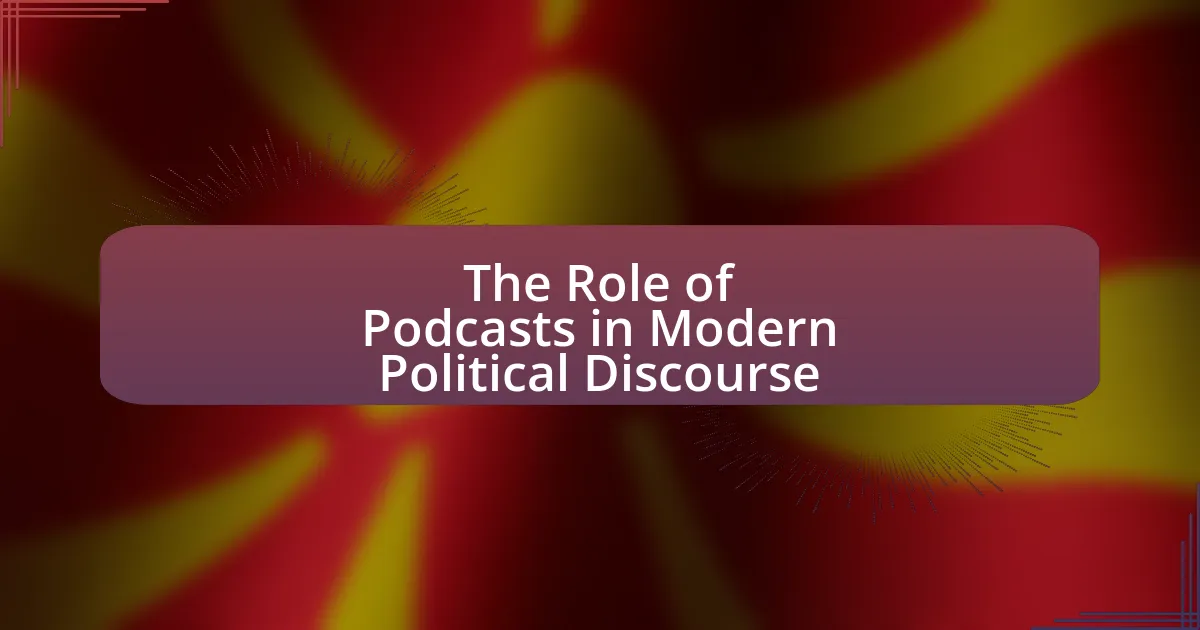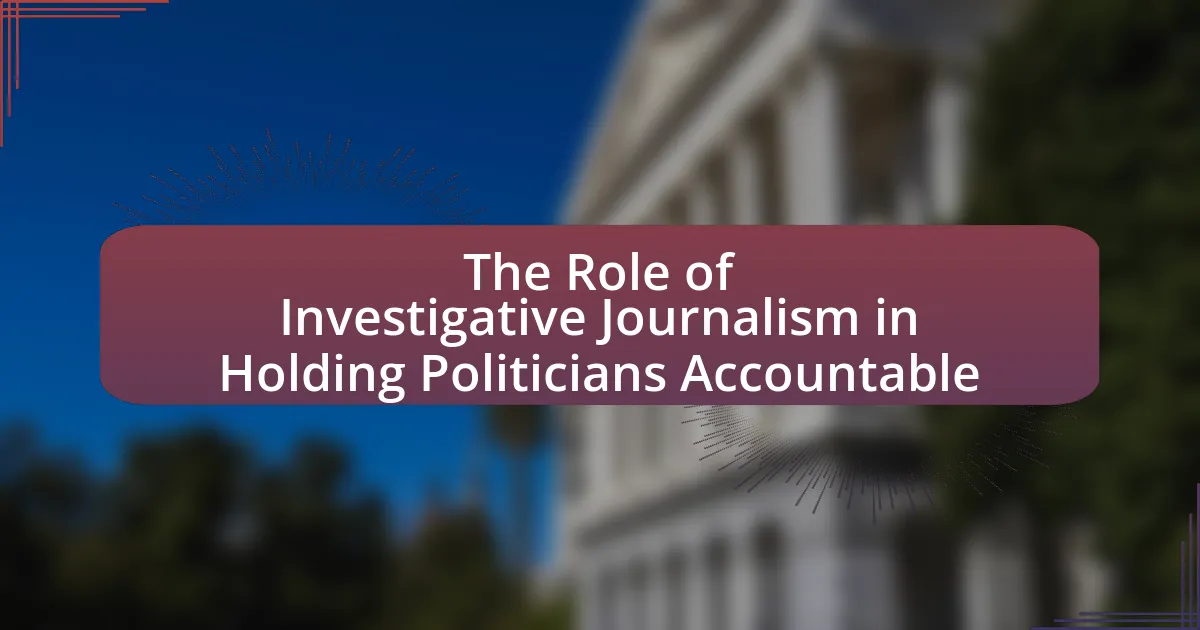The article examines the influence of media framing on public understanding of policy issues, highlighting how the presentation and interpretation of information can shape public perception and opinion. It discusses key elements of media framing, including selection, emphasis, and presentation, and explores how different framing techniques can lead to varying public responses to the same policy issue. The article also addresses the implications of media framing for policymakers and the public, emphasizing the importance of responsible media practices and media literacy in fostering informed public discourse. Through various examples, it illustrates how framing can significantly impact public engagement and understanding of critical policy matters.

What is the Influence of Media Framing on Public Understanding of Policy Issues?
Media framing significantly shapes public understanding of policy issues by influencing how information is presented and interpreted. When media outlets emphasize certain aspects of a policy while downplaying others, they create a specific narrative that can affect public perception and opinion. For instance, research by Entman (1993) highlights that framing can lead to different interpretations of the same issue, such as viewing climate change as a scientific concern versus an economic opportunity. This selective presentation can guide public discourse, impact political decision-making, and ultimately shape policy outcomes.
How does media framing shape public perception of policy issues?
Media framing significantly shapes public perception of policy issues by influencing how information is presented and interpreted. When media outlets emphasize certain aspects of a policy while downplaying others, they create a specific narrative that can sway public opinion. For example, studies have shown that framing climate change as a scientific consensus leads to greater public concern and support for environmental policies, while framing it as a debate among scientists can lead to skepticism and inaction. This effect is supported by research from the Pew Research Center, which found that the way news is framed can alter audience perceptions and attitudes toward issues like immigration and healthcare. Thus, media framing plays a crucial role in guiding public understanding and response to policy matters.
What are the key elements of media framing?
The key elements of media framing include selection, emphasis, and presentation of information. Selection refers to the process of highlighting certain aspects of an issue while omitting others, which shapes audience perception. Emphasis involves prioritizing specific details or angles that influence how the audience interprets the information. Presentation encompasses the language, visuals, and context used to convey the message, which can further affect public understanding and opinion. These elements collectively determine how issues are perceived and understood by the public, impacting policy discussions and decisions.
How do different framing techniques affect audience interpretation?
Different framing techniques significantly affect audience interpretation by shaping how information is perceived and understood. For instance, the way an issue is framed—whether as a problem, a threat, or an opportunity—can lead to varying emotional responses and attitudes. Research by Entman (1993) highlights that framing influences which aspects of an issue are emphasized, thereby guiding audience focus and interpretation. Additionally, studies have shown that frames can alter public opinion; for example, framing climate change as a public health issue rather than an environmental one can increase urgency and support for policy action (Guber, 2013). Thus, the choice of framing techniques directly impacts how audiences interpret and respond to policy issues.
Why is media framing important in the context of policy issues?
Media framing is important in the context of policy issues because it shapes public perception and understanding of those issues. By highlighting specific aspects of a policy while downplaying others, media framing influences how audiences interpret information, which can affect public opinion and policy outcomes. For instance, studies have shown that framing climate change as a public health issue rather than an environmental one can lead to increased public support for related policies, as evidenced by research from the Yale Program on Climate Change Communication. This demonstrates that the way media presents information can significantly alter the public’s engagement and response to policy matters.
What role does media play in informing public opinion?
Media plays a crucial role in informing public opinion by shaping perceptions and attitudes through the selection and presentation of news. The framing of issues by media outlets influences how the public interprets events and policies, often guiding the narrative and highlighting specific aspects while downplaying others. For instance, studies have shown that media coverage of health care reform in the United States significantly affected public support, with different outlets framing the issue in ways that either promoted or undermined the policy. This demonstrates that the way media presents information can directly impact public understanding and opinion on critical issues.
How can framing lead to different public responses to the same policy issue?
Framing can lead to different public responses to the same policy issue by emphasizing specific aspects of the issue while downplaying others, thereby shaping perceptions and attitudes. For instance, a policy framed as a public health initiative may garner support due to its focus on community well-being, while the same policy framed as a government intervention may provoke resistance due to concerns over personal freedoms. Research by Entman (1993) highlights that the selection and salience of certain elements in communication can significantly influence how audiences interpret and react to policy issues, demonstrating that the framing of information is crucial in determining public opinion.

What are the mechanisms of media framing in policy discourse?
Media framing in policy discourse operates through several mechanisms, including selection, emphasis, and exclusion of information. These mechanisms shape how issues are perceived by the public and policymakers. For instance, selection involves highlighting specific aspects of a policy issue while downplaying others, which can influence public opinion by directing attention to particular narratives. Emphasis refers to the way certain frames are presented more prominently, affecting the perceived importance of those issues. Exclusion involves omitting certain viewpoints or data, which can lead to a skewed understanding of the policy context. Research by Entman (1993) illustrates that these mechanisms can significantly alter the interpretation of policy issues, demonstrating that the way information is framed can lead to different public responses and policy outcomes.
How do journalists and media outlets frame policy issues?
Journalists and media outlets frame policy issues by selecting specific aspects of a story to highlight, thereby influencing public perception and understanding. This framing occurs through the use of language, imagery, and the context provided, which can shape how audiences interpret the significance of the issue. For instance, framing a healthcare policy as a “crisis” can evoke urgency and concern, while describing it as a “reform” may suggest a more positive and proactive approach. Research indicates that the framing of issues can significantly affect public opinion; for example, studies have shown that media portrayal of climate change as a “scientific consensus” versus a “debate” can lead to differing levels of public concern and action.
What strategies do media use to highlight certain aspects of policy?
Media utilize several strategies to highlight specific aspects of policy, including framing, agenda-setting, and selective emphasis. Framing involves presenting information in a way that influences how audiences interpret the policy, often by focusing on particular angles or narratives. For example, a news outlet may frame a healthcare policy as a moral obligation, thereby emphasizing ethical considerations over economic implications. Agenda-setting refers to the media’s ability to prioritize certain issues, making them more salient in public discourse. Research shows that when media outlets consistently cover specific policies, they shape public perception of their importance. Selective emphasis involves highlighting certain facts or statistics while downplaying others, which can skew public understanding. For instance, emphasizing the financial costs of a policy without discussing its potential benefits can lead to a negative public perception. These strategies collectively influence how the public understands and engages with policy issues.
How does the choice of language influence framing?
The choice of language significantly influences framing by shaping how information is perceived and interpreted. Language can emphasize certain aspects of an issue while downplaying others, thereby guiding public understanding and opinion. For instance, research by Entman (1993) highlights that specific word choices can activate different cognitive responses, leading audiences to interpret the same event in varied ways based on the framing presented. This demonstrates that the linguistic framing of policy issues can alter public perception, affecting attitudes and behaviors towards those issues.
What are the effects of media framing on public understanding?
Media framing significantly shapes public understanding by influencing how issues are perceived and interpreted. When media outlets present information through specific frames, they highlight certain aspects while downplaying others, which can lead to biased interpretations. For instance, a study by Entman (1993) demonstrates that framing can affect public opinion by emphasizing particular attributes of a policy issue, such as focusing on economic impacts rather than social consequences. This selective presentation can alter the audience’s emotional responses and cognitive evaluations, ultimately guiding their opinions and beliefs about the issue at hand.
How does framing impact public knowledge and awareness of policy issues?
Framing significantly impacts public knowledge and awareness of policy issues by shaping how information is presented and interpreted. When media outlets emphasize certain aspects of a policy while downplaying others, they influence public perception and understanding. For instance, a study by Entman (1993) highlights that framing can lead to different interpretations of the same issue, such as viewing climate change as a scientific concern versus an economic opportunity. This selective presentation affects what the public considers important, ultimately guiding their opinions and engagement with policy matters.
What psychological factors contribute to the effectiveness of media framing?
Psychological factors that contribute to the effectiveness of media framing include cognitive biases, emotional responses, and social identity. Cognitive biases, such as confirmation bias, lead individuals to favor information that aligns with their pre-existing beliefs, making them more receptive to framed narratives that resonate with those beliefs. Emotional responses, particularly fear or empathy, can enhance the impact of a frame by eliciting strong reactions that motivate individuals to engage with the content. Additionally, social identity influences how people interpret media frames; individuals are more likely to accept frames that align with their group identity, reinforcing in-group solidarity and shaping perceptions of policy issues. Research indicates that these psychological mechanisms significantly affect how audiences process and respond to media messages, ultimately shaping public understanding and opinion on policy matters.

What are the implications of media framing for policymakers and the public?
Media framing significantly influences both policymakers and the public by shaping perceptions and guiding discourse on policy issues. Policymakers rely on media framing to understand public sentiment and prioritize issues, as studies show that the way media presents information can affect legislative agendas and decision-making processes. For instance, research by Entman (1993) highlights that media framing can emphasize certain aspects of an issue, leading to shifts in public opinion and policy responses. The public, in turn, interprets policy issues through the lens of media framing, which can affect their understanding and engagement with those issues. This dynamic illustrates that media framing not only informs but also potentially manipulates the narrative surrounding policy, impacting democratic processes and public trust.
How can policymakers utilize media framing to their advantage?
Policymakers can utilize media framing to their advantage by strategically shaping the narrative around policy issues to influence public perception and opinion. By selecting specific frames—such as emphasizing economic benefits or social justice—they can guide how the public interprets policies, thereby increasing support or mitigating opposition. Research indicates that framing effects can significantly alter public attitudes; for instance, a study by Chong and Druckman (2007) demonstrated that different frames on the same issue led to varying levels of public support, highlighting the power of media framing in shaping policy discourse.
What strategies can be employed to counteract negative framing?
To counteract negative framing, individuals and organizations can employ strategies such as reframing the narrative, emphasizing positive outcomes, and providing balanced information. Reframing involves presenting the same issue in a different light, which can shift public perception; for example, instead of focusing on the costs of a policy, highlighting its long-term benefits can create a more favorable view. Emphasizing positive outcomes can be achieved by showcasing success stories or data that illustrate the effectiveness of a policy, thereby countering negative associations. Providing balanced information involves presenting multiple perspectives on an issue, which can mitigate the impact of negative framing by allowing audiences to see a fuller picture. Research indicates that reframing can significantly alter public attitudes, as demonstrated in studies on health communication where positive framing led to increased support for health initiatives.
How can effective framing enhance public engagement with policy issues?
Effective framing enhances public engagement with policy issues by shaping how individuals perceive and interpret those issues. When policy issues are framed in relatable and accessible terms, they resonate more with the public, leading to increased interest and participation. For instance, research by Entman (1993) highlights that framing can influence the salience of specific aspects of an issue, thereby guiding public attention and discussion. This means that when media outlets emphasize certain narratives or perspectives, they can mobilize public opinion and action more effectively. Additionally, studies show that frames that connect policy issues to personal experiences or community values foster a deeper emotional connection, which is crucial for engagement.
What best practices should be followed to ensure responsible media framing?
To ensure responsible media framing, journalists should prioritize accuracy, context, and diversity of perspectives. Accuracy involves verifying facts and avoiding sensationalism, as misleading information can distort public understanding of policy issues. Context is crucial; providing background information helps audiences grasp the complexities of issues, preventing oversimplification. Additionally, incorporating diverse perspectives fosters a more balanced narrative, allowing for a comprehensive view of the topic. Research indicates that media framing significantly influences public perception, as demonstrated in studies like “Framing Effects on Public Opinion” by Druckman (2001), which highlights how different presentations of the same issue can lead to varying public responses.
How can media outlets promote balanced and fair coverage of policy issues?
Media outlets can promote balanced and fair coverage of policy issues by ensuring diverse perspectives are represented in their reporting. This can be achieved through practices such as including voices from various stakeholders, conducting thorough research, and fact-checking information before publication. For instance, studies have shown that media coverage that incorporates multiple viewpoints leads to a more informed public, as evidenced by the Pew Research Center’s findings that diverse media representation enhances audience understanding of complex issues. By prioritizing inclusivity and accuracy, media outlets can mitigate bias and foster a more equitable discourse on policy matters.
What role does media literacy play in understanding framing effects?
Media literacy plays a crucial role in understanding framing effects by equipping individuals with the skills to critically analyze and interpret media messages. This critical analysis enables individuals to recognize how information is presented and the potential biases that influence public perception. Research indicates that individuals with higher media literacy are better able to identify framing techniques, such as the selection of certain facts over others, which can shape opinions and attitudes toward policy issues. For instance, studies have shown that media literacy education can significantly enhance the ability to discern framing in news coverage, leading to more informed public discourse and decision-making.





